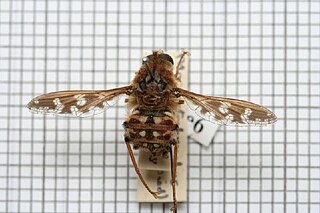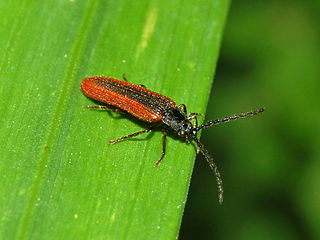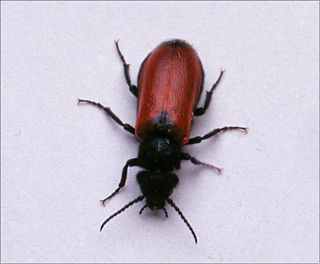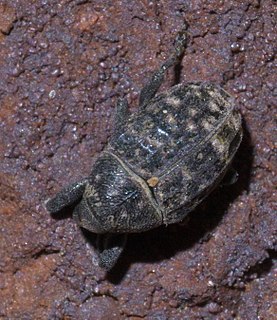
The Integrated Taxonomic Information System (ITIS) is an American partnership of federal agencies designed to provide consistent and reliable information on the taxonomy of biological species. ITIS was originally formed in 1996 as an interagency group within the US federal government, involving several US federal agencies, and has now become an international body, with Canadian and Mexican government agencies participating. The database draws from a large community of taxonomic experts. Primary content staff are housed at the Smithsonian National Museum of Natural History and IT services are provided by a US Geological Survey facility in Denver. The primary focus of ITIS is North American species, but many biological groups exist worldwide and ITIS collaborates with other agencies to increase its global coverage.

Eucinetidae is a family of beetles, notable for their large coxal plates that cover much of the first ventrite of the abdomen, sometimes called plate-thigh beetles. The family is small for beetles, with about 50 species in 11 genera, but are found worldwide.

Tritoma is a genus of beetles in the family Erotylidae, the pleasing fungus beetles. It is distributed worldwide, mainly in the Old World. There are over 100 species.

Anthribidae is a family of beetles also known as fungus weevils. The antennae are not elbowed, may occasionally be longer than the body and thread-like, and can be the longest of any members of Curculionoidea. As in the Nemonychidae, the labrum appears as a separate segment to the clypeus, and the maxillary palps are long and projecting.

Nemestrinidae, or tangle-veined flies is a family of flies in the superfamily Nemestrinoidea, closely related to Acroceridae. The family is small but distributed worldwide, with about 300 species in 34 genera. Larvae are endoparasitoids of either grasshoppers (Trichopsideinae) or scarab beetles (Hirmoneurinae). Some are considered important in the control of grasshopper populations. Adults are often observed on flowers.

Clivina is a genus of ground beetle native to the Palearctic, the Nearctic, the Near East and North Africa. There are at least 580 described species in Clivina.

Chrysobothris is a genus of metallic wood-boring beetles in the family Buprestidae. There are at least 690 described species in Chrysobothris.

Omalisidae are a very small family of beetles within the superfamily Elateroidea. Members of this beetle family have bioluminescent organs on the larvae. The most recent evidence indicates they are the sister group to a clade comprising the families Rhagophthalmidae and Phengodidae.

The Ropalomeridae are a family of acalyptrate flies.

The Aphrophoridae or spittlebugs are a family of insects belonging to the order Hemiptera. There are at least 160 genera and 990 described species in Aphrophoridae.

Tricrania is a genus of blister beetles in the family Meloidae. There are at least three described species in Tricrania.
Lycus sanguinipennis is a species of net-winged beetle in the family Lycidae. It is found in North America.

Rhyssomatus is a genus of true weevils in the beetle family Curculionidae. There are at least 180 described species in Rhyssomatus.
Microctenochira bonvouloiri is a species of tortoise beetle in the family Chrysomelidae. It is found in Central America and North America.
Huaca apian is a species of true weevil in the beetle family Curculionidae. It is found in North America.
Manomera is a genus of walkingsticks in the family Diapheromeridae. There are at least three described species in Manomera.
Microlinyphia mandibulata is a species of sheetweb spider in the family Linyphiidae. It is found in the United States.
Breviperna is a genus of stiletto flies in the family Therevidae. There are at least two described species in Breviperna.
Anthonomus ligatus is a species of true weevil in the beetle family Curculionidae. It is found in North America.
Pentispa is a genus of tortoise beetles and hispines in the family Chrysomelidae. There are at least 20 described species in Pentispa.














